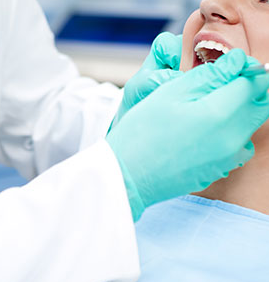Inflammatory Papillary Hyperplasia Definition, Symptoms, Causes, Treatment
When a patient has a history of poorly fitting dentures or poor oral hygiene, they are more likely to develop a benign lesion of the palate called inflammatory papillary hyperplasia. The exact cause remains unknown. A person of any age can develop inflammatory papillary hyperplasia. However, it is most frequently observed in people between the ages of 30 and 50. White people and men experience it more frequently. Surgical excision is the recommended treatment for this condition. Once the lesion has been removed, the prognosis is favorable.
The majority of lesions are identified behind ill-fitting dentures that have been used for a long time, as well as in patients who do not remove their dentures overnight. The lesion seems to be caused by a mix of chronic, mild injuries that let frictional irritation happen.
Definition
Inflammatory papillary hyperplasia, also known as IPH, is a condition that affects the oral mucosa and is defined by the formation of one or more nodular lesions that are around 2 millimeters or less in size. IPH is a benign condition. The lesion predominantly affects the hard palate. However, it has been observed on the mandible in a few instances. The majority of patients with this condition do not have any symptoms, and the color of the mucosa can range from pink to red.

Symptoms
Papillary hyperplasia is more common in middle-aged and older people, and women are more likely to develop it. The affected areas include the hard palate and alveolar ridges, both of which are surrounded by a dense bone structure that makes them susceptible to disease. In most cases, patients with inflammatory papillary hyperplasia have no symptoms. It appears as a group of distinct papules or nodules that may be erythematous, transparent, or have a regular-looking surface. The surface of the mucosa is pebbly or papillary, and it often has an erythematous appearance.
Typically, the whole vault of the hard palate is affected, but the alveolar mucosa remains intact. Between papules, white Candida colonies resembling cottage cheese may be observed. Although discomfort is uncommon, a burning feeling could be brought on by the yeast infection. Older papules are more fibrotic and hard and are clinically indistinguishable from irritant fibroma, while early papules are more edematous.
Causes
The mechanism that causes the condition is not precisely understood. Poor denture fit, wearing dentures 24 hours a day, lack of oral care, denture liner sensitivity, smoking, aging, and certain systemic illnesses have all been proposed as possible causes. The infestation of Candida brought on by inadequate oral hygiene is also linked to inflammatory papillary hyperplasia.
Treatment
Denture use should be discontinued for a period of two to four weeks in patients with early lesions of inflammatory papillary hyperplasia. This may allow the lesion to entirely disappear. In some cases, topical antibiotics or antifungal treatments can beneficial. Antifungal mouth rinses/gels and chlorhexidine mouth rinses (at 0.12% concentration) are commonly used for the treatment of minor lesions.
For larger and more progressed lesions, the hyperplastic tissue may need to be removed before a new denture can be made. There have been several different surgical procedures, including the following:
The removal of tissue by a surgical blade, either partially or entirely
- Electrosurgery
- Curettage
- Surgical laser therapy
- Cryosurgery
 Reviewed by Simon Albert
on
January 18, 2023
Rating:
Reviewed by Simon Albert
on
January 18, 2023
Rating:











